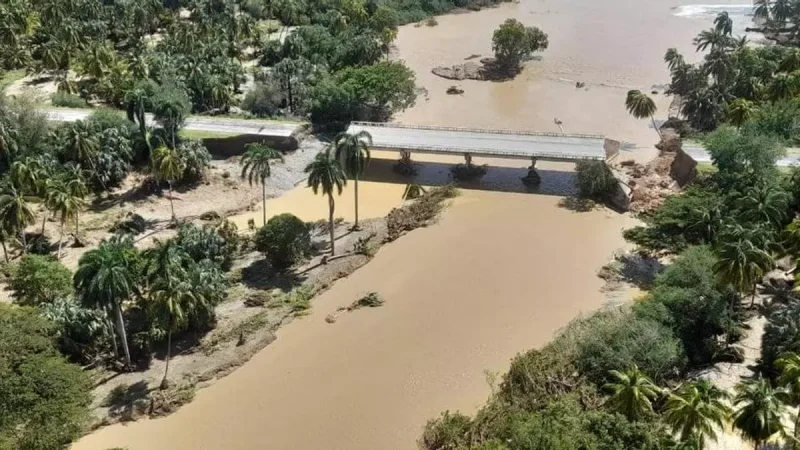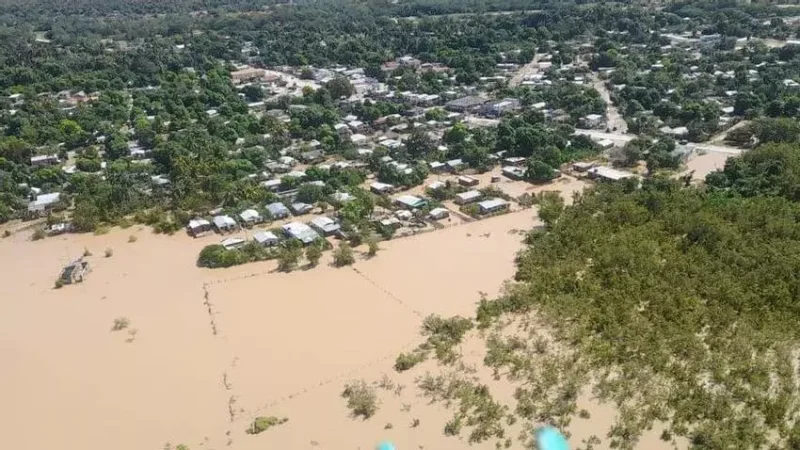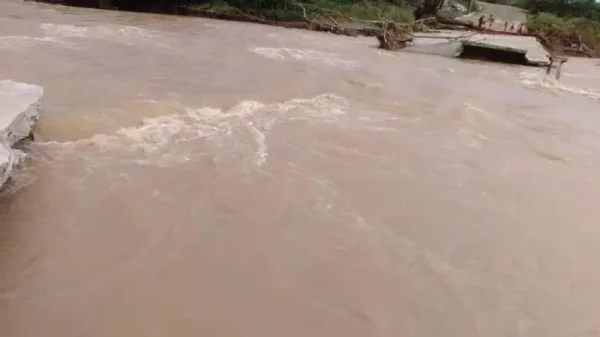Update on Damage from Hurricane Oscar in Guantanamo, Cuba

So far, the number remains at six deceased in San Antonio del Sur and one in Imías, but both are cut off from communication.
HAVANA TIMES – Hurricane Oscar left Cuba on Monday, but the anguish continues in San Antonio del Sur, Imías, and, to a lesser extent, in Baracoa, where almost all communication routes are cut off. Damage to the roads prevents access to the three Guantanamo communities, and the phones have no signal, so the concern for family and friends continues unabated. Authorities have counted seven deceased so far, but there is growing conviction that there could be more, given the images and the people who have yet to be located.
“Of the people who have gone to Imías and have turned back, does anyone know anything about the community of Guajacal, which was not evacuated. I don’t see that the Government has uploaded images from there?” asked a user on Facebook. “From Yacabo,” “from San Ignacio…” the doubts about the smaller communities of Imias piled up, and connection is scarce. “There is a part of Cajobabo that has signal and also internet… Send news from there,” someone replied.
“Officially, the victims from San Antonio del Sur are Liz Anyi Elías Labañino, 5 years old; Iriannis Labañino Domínguez, 31; Francisco Columbié Matos, 92; Esmérido Noa Fiffe, 86; Antolino Áreas Domínguez, 83; and Alexander Savón Matos, 42. Additionally, there is one deceased in Imías whose identity is still unknown.
Local television in Baracoa also reported the transfer by helicopter of a child with life-threatening conditions. Photographs proliferate from hospitals showing the injured who have been rescued, but the difficulties in reaching the area are very high.
According to the Minister of Transport, Eduardo Rodríguez, a massive sinkhole was detected yesterday afternoon on the road in front of the hospital, km 66 in Acopio, which caused a cut in the road leading to Imías, leaving this town without access, like Baracoa and Maisi. Furthermore, in Macambo and La Farola, there were “large landslides” and damage on the San Antonio-Puriales road, whose bridge had one of its head structures eroded.
“I made it to San Antonio but I couldn’t continue the trip. There is serious damage to the roads. We still do not have all the damage assessed,” reported Jesus Perez Alonso, director of the Provincial Road Center.

Early Wednesday morning, Radio Guantánamo indicated that work to reach San Antonio and Imías was ongoing, while in Baracoa and Maisi the situation was somewhat better. The one who was able to reach Imías on Tuesday afternoon was Yoel Pérez García, the first secretary of the Communist Party in Guantánamo, who accessed on foot due to the impossibility of doing so in any other way. His individual feat was leveraged by the authorities, who extended the achievement to the past and present Communist Party. “Just as Fidel Castro accustomed us, a legacy that President Miguel Díaz-Canel continues,” praised Solvisión.
In a Tuesday night appearance, Diaz-Canel had candidly admitted the seriousness of the situation in Guantanamo: “The situation is very complex,” he said. So far, at least 1,048 partial roof collapses have been quantified, in addition to 51 total house collapses.
The Army also began arriving on Tuesday by helicopter, with 493 rescues counted in flooded areas, according to Eduardo Cross, the second in command of the Operations Department of the National Civil Defense Eduardo Cross. He added that 4,865 people are in evacuation centers and 443 are in the homes of family and friends.
The population, however, believes that all efforts have been insufficient and that the residents of the area were caught off guard by a change in the hurricane’s path, lacking power and communication since Friday. “Those people were without electricity like the rest of the country,” lamented a Havana resident. “On Sunday, my phone died and had no way to charge it; from what I had seen on NOAA (US National Hurricane Center), the hurricane was a category 1 and headed closer to Holguín. On Monday, when I had charge again, the hurricane had changed its route.”

The countless photographs showing destroyed roads and flooded paths highlight why it has been impossible to access the most affected localities so far, but there is much indignation on social media about the lack of aerial equipment that could have mitigated the damage and presumably the deaths that are still unknown. “I wonder, does Cuba have only one helicopter that can make just one round a day? Those of us outside of Imías and have families there are desperate,” a user pleaded to a Guantanamo journalist.
Others reminisced not to attack the regime but the current government: “Does anyone remember when Fidel almost lost his life in an amphibious vehicle during a cyclone? Sure, many do; that’s why he was and will always be our only undefeated leader. If Fidel were alive, he would have already arrived with rescue forces in Imías; no one should doubt that.”
Meanwhile, electricity in these areas continues to be inadequate. Guantanamo is connected through microsystems, and circuits are rotated as possible. A break in the fiber optic line also prevents telephone and internet communication, and there are fallen telephone and electric poles complicating other vital services.





